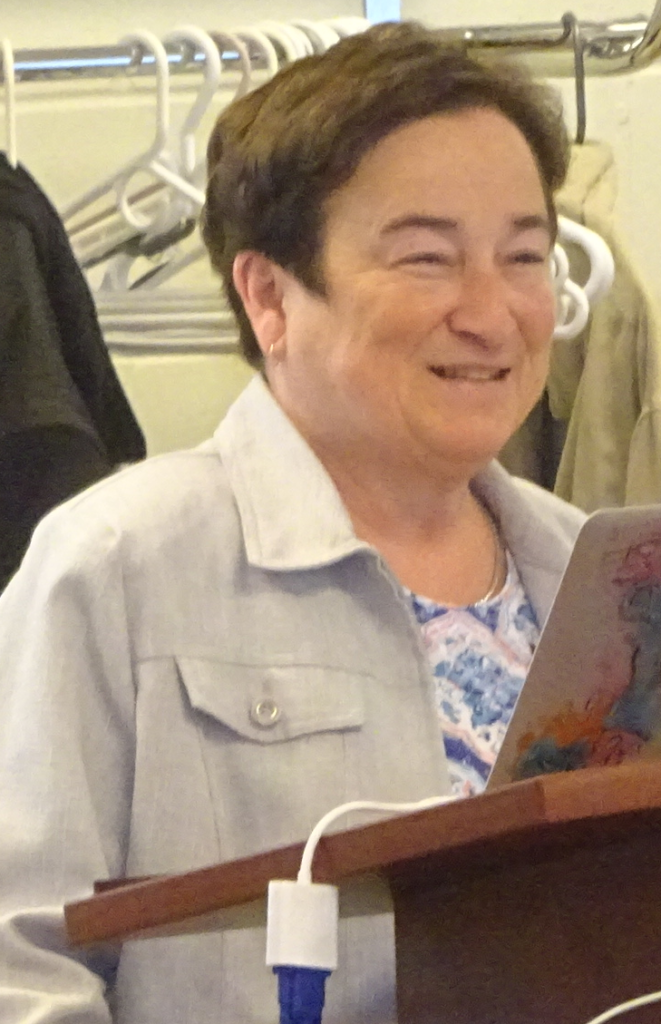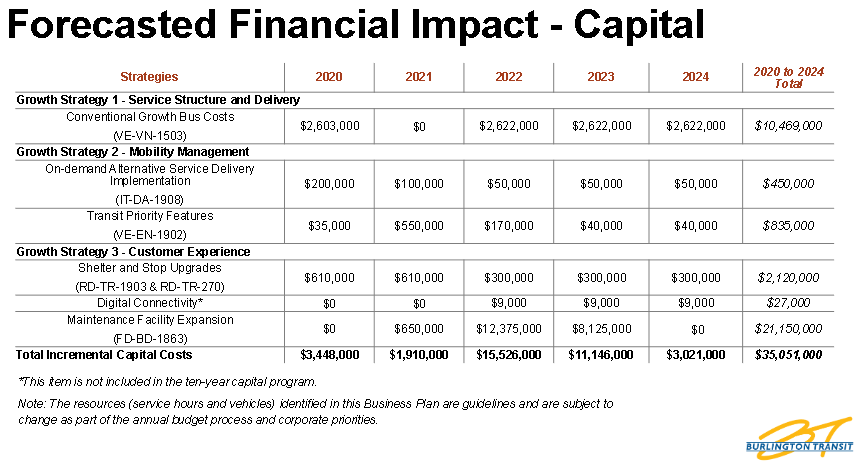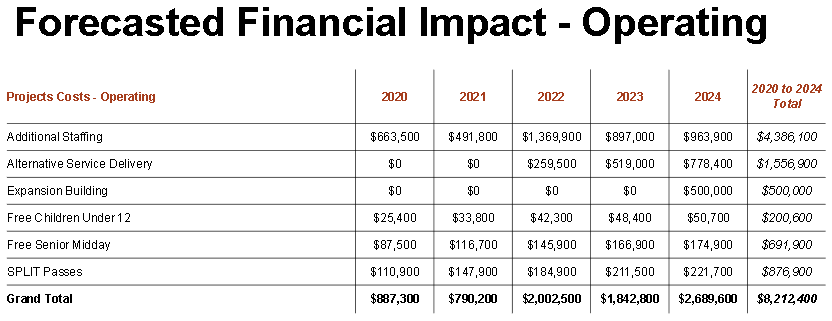 By Pepper Parr
By Pepper Parr
December 9th, 2020
BURLINGTON, ON
Transit was showing some very impressive ridership increases; city council was impressed – it looked as if a service that was costing the city a bundle was in the process of turning a corner.

Ridership was growing – senior use grew by 40% +
The new Director of Transit brought a depth of experience to the job and knew the business of moving people better than anyone the city had running that service in a decade.
Then Covid 19 became a reality and for months the transit people didn’t see a dime – transit was free so that people could get to work.
The plans to look seriously at a fleet of electric buses is underway – but the kind of money needed isn’t readily available.
The transit people and council learned during a workshop that a transit fleet could not be a combination of diesel and electric – it had to be one or the other. The cost of running the two systems side by side was prohibitive.

From the left: Councillors Stolte, Kearns and Nisan at a traditional photo op.
Then along came a grant from the federal government for six buses – all diesel – looked like a step backward.
Tuesday morning council got a look at a transit five year plan that showed promise.
A brisk, smartly delivered presentation where transit staff had most of the answers at their fingertips covered the following:
Service Strategy and delivery
Mobility Management
Customer Experience
Travel Demand Management

Director of Transit Sue Connors run a happy shop that is creating a service the city is going to need.
There are challenges:The first step was to get people back to work and using transit. Then determine what is involved with an electric fleet and at the same time consider if hydrogen is a possibility.
CUTRIC (The Canadian Urban Transit Research and Innovation Consortium had been engaged to model the transit service to determine just what would be needed were Burlington to take the electrification plunge.
The first report from CUTRIC was a disappointment, reported Director of Transit Sue Connor. The distance between the stops was a problem.
Electric buses need to be charged and the locations of those charging stations is critical – and at a million a pop there were limits as to just how many Burlington could afford.
The current fleet consists of 63 buses scheduled to grow to 73 in the next four years.
Operating the system day in – day out is job one – figuring out where the growth is going to come from and how it was going to be paid for was job two.

Arterial routes, particularly when arranged as a grid, are easy to remember and the roads used are better-known by the wider community, reducing barriers for new customers. The September 2019 route modifications have already moved in this direction, and the plan is to move in this direction for all future services. A grid -based system also allows for convenient transfers between routes at intersections, providing greater connectivity to more destinations than a single local route could. Where gaps are left in the network, alternative service delivery options such as on-demand transit services will be explored as a more cost-effective solution.
Besides new buses – transit was going to need a second campus with a larger garage to accommodate the vehicles. They are squeezed very tight right now.

Don’t leave home without it – and don’t lose it.
The fare box – something that doesn’t get used anymore (do they even have the things on buses now?) are replaced by the Presto cards.
If Mayor Meed Ward has her way they won’t be needed either. She is of the view that transit should be free.
Connors had said to Council that she was meeting with the Finance people to go through the financial challenges later in the day. In a very telling comment Meed Ward said to Sue Connors: “Regardless of what Finance does, I’ll put it there.”
Ward 5 Councillor Paul Sharman, who has never been a true fan of transit, has seen the writing on the wall. He said he was impressed with the data but that he was reading it a little differently than the Mayor and the rest of his council colleagues. He also said that he has seen three transit business plans – the “first two didn’t hold water”. He is quite correct – the quality of the work delivered by consultants in the past was not very high.
Transit is going to need a lot of money.

Putting WiFi on the buses will cost $90,000 a year.
Driving the need for more buses is the fact that population growth is not being matched by any new roads – those days are basically over for Burlington. In order to get around people are going to have to use transit. The elected officials are going to have to deliver a service that is comfortable and reliable; making this happen will call for a major cultural shift.

There are a lot of passengers who will use the bus at no cost.
Burlington Transit is going through a lengthy and detailed Business Plan that sets out much of what they are going to have to deal with going forward.
 The reality transit has to deal with was set out in the Business Plan:In September 2019, Burlington Transit introduced a new service model, based on a grid-based system and increased service frequency. The early results of this service enhancement showed that ridership had increased over 14 percent from September 2019 to February 2020, compared to the same time a year prior. When the pandemic shut down businesses and lock down began in March 2020, ridership dropped by 75 percent. The pandemic has identified the need to review the numbers and adjust the forecast.
The reality transit has to deal with was set out in the Business Plan:In September 2019, Burlington Transit introduced a new service model, based on a grid-based system and increased service frequency. The early results of this service enhancement showed that ridership had increased over 14 percent from September 2019 to February 2020, compared to the same time a year prior. When the pandemic shut down businesses and lock down began in March 2020, ridership dropped by 75 percent. The pandemic has identified the need to review the numbers and adjust the forecast.
Strong leadership at transit, a staff that is motivated and capable of finding creative and innovative solutions should get Burlington to the point where there is a system that people will want t use.
Can Mayor Meed Ward make it a totally free system? And is it something she really wants to spend a lot of her political capital on is a question only she can answer.



















A good article – but your description that transit “was costing the City a bundle” needs some context.
For several decades, Burlington has been seriously underfunding its transit system – resulting in poor service and falling ridership. In the 1980’s Burlington Transit was providing 15 minute service on its main routes and ridership peaked at 7% of all trips compared to roughly 2% currently. Budget cuts to transit during the 90’s and early 2000’s resulted in Burlington spending less than half the per capita average spending of all GTA municipalities on transit.
Things began to change 2017 with the hiring of a new transit director, Sue Connor. At a special meeting of council in September 2017, Sue and her staff documented the severe results that chronic under-funding had caused within Burlington Transit – including ongoing violations of labour law due to under-staffing. This report forced the former council to provide emergency funding so that BT could operate safely and within the law.
The biggest change was to occur in 2018 with the election of a new pro-transit council. All new members of council had made a commitment to increase transit per capita funding to the GTA average. This has resulted in a modest increase in the transit budget and the beginning of the process to improve service and increase ridership. The ridership was beginning to grow significantly – but then the pandemic hit, causing a large drop in ridership in all transit systems as many people avoided crowded transit vehicles for fear of infection. Added to this was fare collection ending for some months as riders were required to enter buses by the rear door to protect the drivers – until buses were equipped with protective driver shields.
Recently, ridership has been creeping upward again as passengers get used to the adjustments and protective measures that have been implemented by Burlington Transit.
Back to the question of funding – the economic benefits of transit have been confirmed in many studies. A 2009 national study of the economic benefits1 found that “municipalities could not make a better investment than in transit with a return on investment of at least 12% – but probably higher” Locally, a recent study in support of Hamilton’s Climate Emergency Plan calculated large economic benefits from increasing transit use in Hamilton2 .
So let’s stop considering transit only as a cost but instead look at transit a smart investment with large economic, environmental and social returns.
1 Canadian Urban Transit Association, Economic Benefits of Transit https://cutaactu.ca/sites/default/files/final_cuta-economicbenefitsoftransit-finalreportesept2010.pdf.
2 Economic Impact of the Community Climate Change Action Plan City of Hamilton, ECONOMETRIC RESEARCH LIMITED, FEBRUARY 22, 2016
Doug Brown, BFAST, Burlington for Accessible Sustainable Transit
So let me be clear, BT needs improvement. And there may very well be benefits to an efficient transit system in our city. However, I believe the VAST majority of the funding to cover the cost of that system should be coming from the ridership (fares). The more riders you get the lower the fares could become. The report you cited, does not even contain the phrase “return on investment”. What you are disingenuously referencing is a single bullet point that takes into account land value growth projections and applied savings estimates for pollution and carbon. “A recent cost‐benefit analysis of a large‐scale national investment in transit found that an investment of $71bn in capital costs would return fully $239bn in benefits over 30 years, or an annual rate of return of 12.5”. A national 30 year heavy rail and subway strategy is not he same as having empty BT buses running down New Street on the taxpayers dime.
There’s a benefit people often forget. A well-designed transit system gives people the option to get around without needing to use their car. The benefits accrue to every single one of us who does drive a car in the form of lower traffic. Crappy transit means people have little choice but the private automobile, the most expensive form of mobility, for the individual, for the 3 levels of government, and with respect to the limited amount of space available. If we bring another 20,000 people into this city, having them all driving their own automobiles will cost us all tremendous amounts of time and money, and I’d definitely be willing to contribute some tax dollars to build a usable transit system that prevents that and gives the people of Burlington real options.
It’s not a “totally free system”. It would be a complementary system that would be paid for by taxpayers. Why should I be forced to pay for someone else’s transportation? It makes no sense. If this is such a valuable service why aren’t people willing to pay for it themselves?
I have lived in Burlington for over 15 years and I am still waiting for the “Brant Street Shuttle or the Hop On, Hop off program that was suggested by Rick Goldring.
If something as simple as this cannot be accomplished in 15 years, how long will it take to revamp the entire public transit system in Burlington? Certainly not in my lifetime.